New formats of mobile advertising, disassembling iOS - Android, and a lot of analytics in the news of the week for mobile developers
We put the game in your game so you can play while you play
This is not to say that it is possible to surprise someone with a mobile in-game advertisement in a mini-game format: the format did not appear on mobile devices yesterday. The essence is simple: in the application appears an advertising window in which the user is obliged to perform a couple of game actions. By this, in principle, he can limit himself and curtail the game just as an uninteresting advertising video. However, it is obvious that the involvement of the player will be stronger, and therefore, the desire to get acquainted with the product - more. But this is only speculation. How it looks in numbers, in its case, the company demonstrated Gameloft.
The goal of the advertising campaign was to tell Gameloft products about the new film “Carrier”. To do this, a racing mini-arcade was built into the games, in which it was necessary, maneuvering in a stream of cars, to get unharmed to the end of the track. The players were further motivated by the fact that in case of victory they received the currency of the game in which they met the advertisement.
The results confirm the hypothesis - a positive gaming impression can increase conversion. 80% went through the game to the end, 14% played again, the percentage of people who went to the site was 2%, which is 4 times higher than the standard CTR for banners.
')
The company claims that such success was achieved not only due to its unusual form, but also due to competent targeting - the film was shown mainly in racing simulators.
About the most important: how to choose the name of the application?
Perhaps the competent design of the application page in the store - this is not the main component of its commercial success, but it definitely does not hinder a good project to quickly get into the top. In one of the previous articles, we learned to choose icons for our applications, and this time App Annie will give advice on the selection of names. Not that the analytical company was surprised by something, rather confirmed the already well-known theses.
So, the name of a successful mobile project should:
- Fit in 23 characters for iOS and 30 for Google Play. This is important so that in the search by store the name is shown in its entirety;
- Work effectively with keywords;
- Significantly different from the names of applications of similar functionality;
- Do not contain additional characters that users will not accurately enter when searching.
How to find your whales?
The company Game Analytics has published a study of paying and non-paying players, which is based on statistics for more than 175 million active users. Dividing them into 4 cohorts according to their total payments: non-paying (97.91%), minnows (1.03%), dolphins (0.86%) and whales (0.2%) - made a comparison on the involvement in the game, the number gaming sessions and time required for the player to become paying.
The result was the following conclusions:
Paying players, especially whales, are loyal to one game, and non-paying players play more games in the same period:

The number of sessions for whales is 2 or even 3 times less than that of non-paying players:
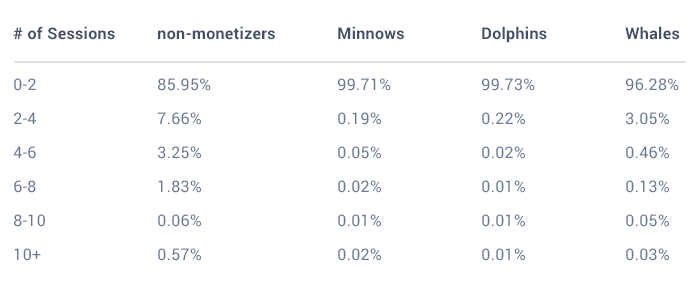
Whales are the most involved of all paying players, but it takes the most time for the convention to pay:
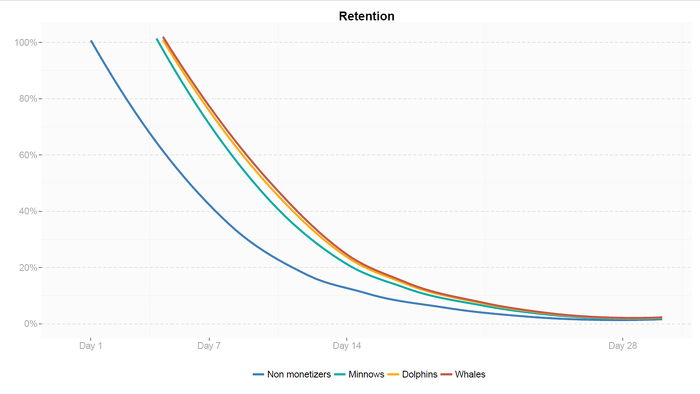
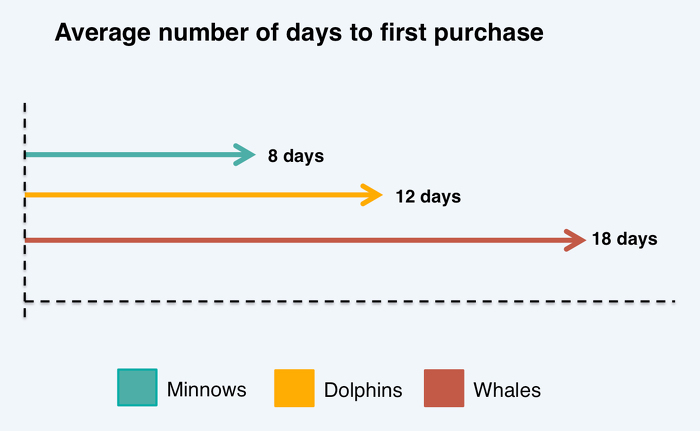
IOS-whales more than Android:

Users of Android devices need more time to convert than iOS:
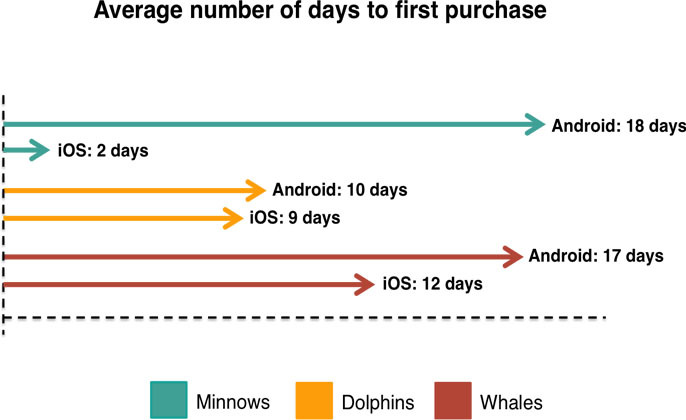
Chinese whales, and in general paying players, pay more than American paying users:

Android development is more important than iOS
Tomislav Kar from Infinum calculated how iOS and Android development differ based on six projects that they have been working on in their studio over the past six months. For performance calculations, all projects were the same on iOS and Android, but there is no inherited code or technical debt that could spoil the data.
If we consider the lines of code:
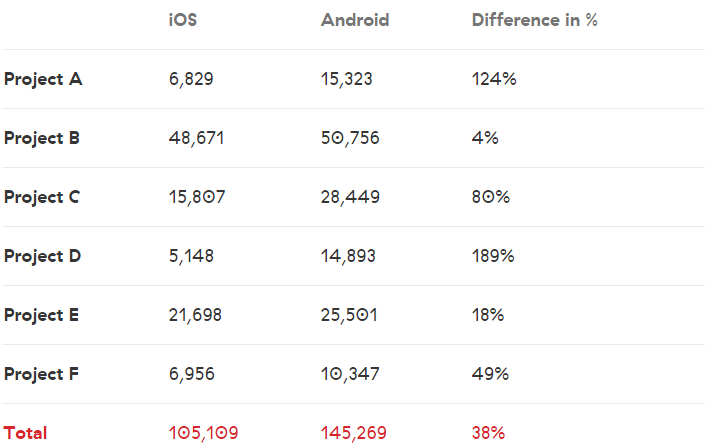
Even in spite of the fact that not a small part of the code is automatically generated, you need to remember that you still need to read, debug and maintain it.
Regarding development time:
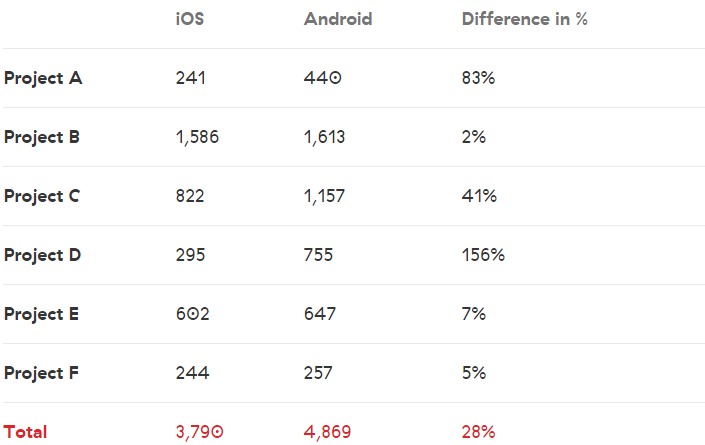
What are the reasons for this difference:
- 1. Just more code - Android applications are written in Java, in which there are simply more words than in Objective-C or Swift. You have to write more. Very often, more code - more work and more potential bugs.
- 2. Emulators slower. Even with GenyMotion, Android emulators are slower than on iOS simulators. This slows down the entire development process.
- 3. Fragmentation - more devices that need to be tested, more special bugs that are specific to only one manufacturer (“Damn, this error only appears on the Chinese phone, which is sold only in Lithuania!”).
- 4. XML markup - on Android, markup is written manually in XML, which is why WYSIWYG techniques are used less frequently than on iOS.
An important and simple conclusion from these results - lay on Android development more time, at least 30%. It should be noted that the tools for Android are getting better and the difference is getting smaller every day.
Activision buys King Digital
There are already jokes on the Internet that now the new company will be called Activision Blizzard King. Theoretically, companies will perfectly complement each other, King has a good expertise in mobile games and a huge audience, this is exactly what Activision needs. On the other hand, King is the company of one game and they need the stability that a new partner can give.
Combined revenues and profits will strengthen our position as the largest, most profitable company in the field of interactive entertainment, - says the head of Activision Blizzard Bobby Kotyk. - Activision Blizzard will provide King with the experience, support and investment to continue development and achieve new heights.
Source: https://habr.com/ru/post/270793/
All Articles